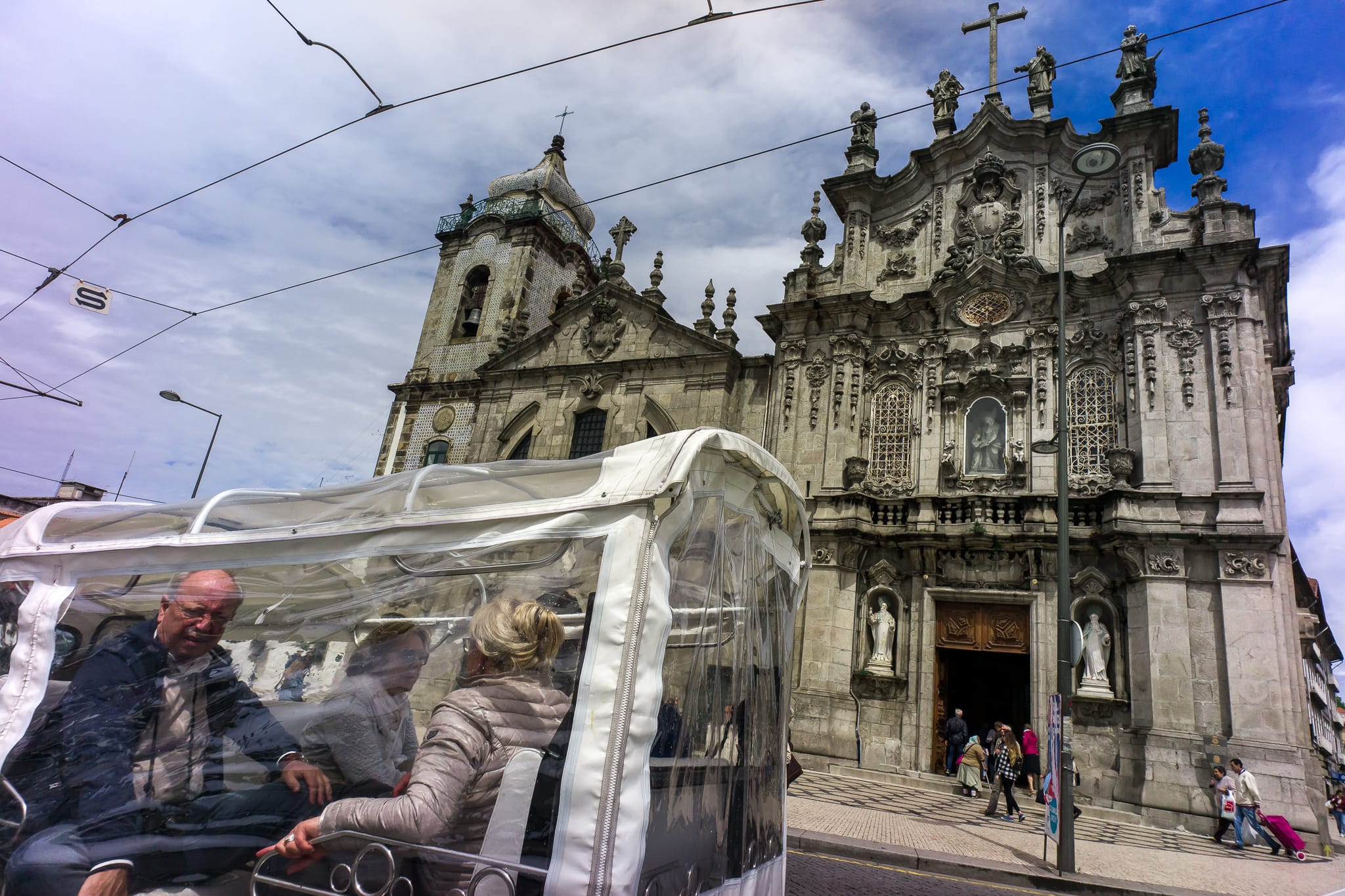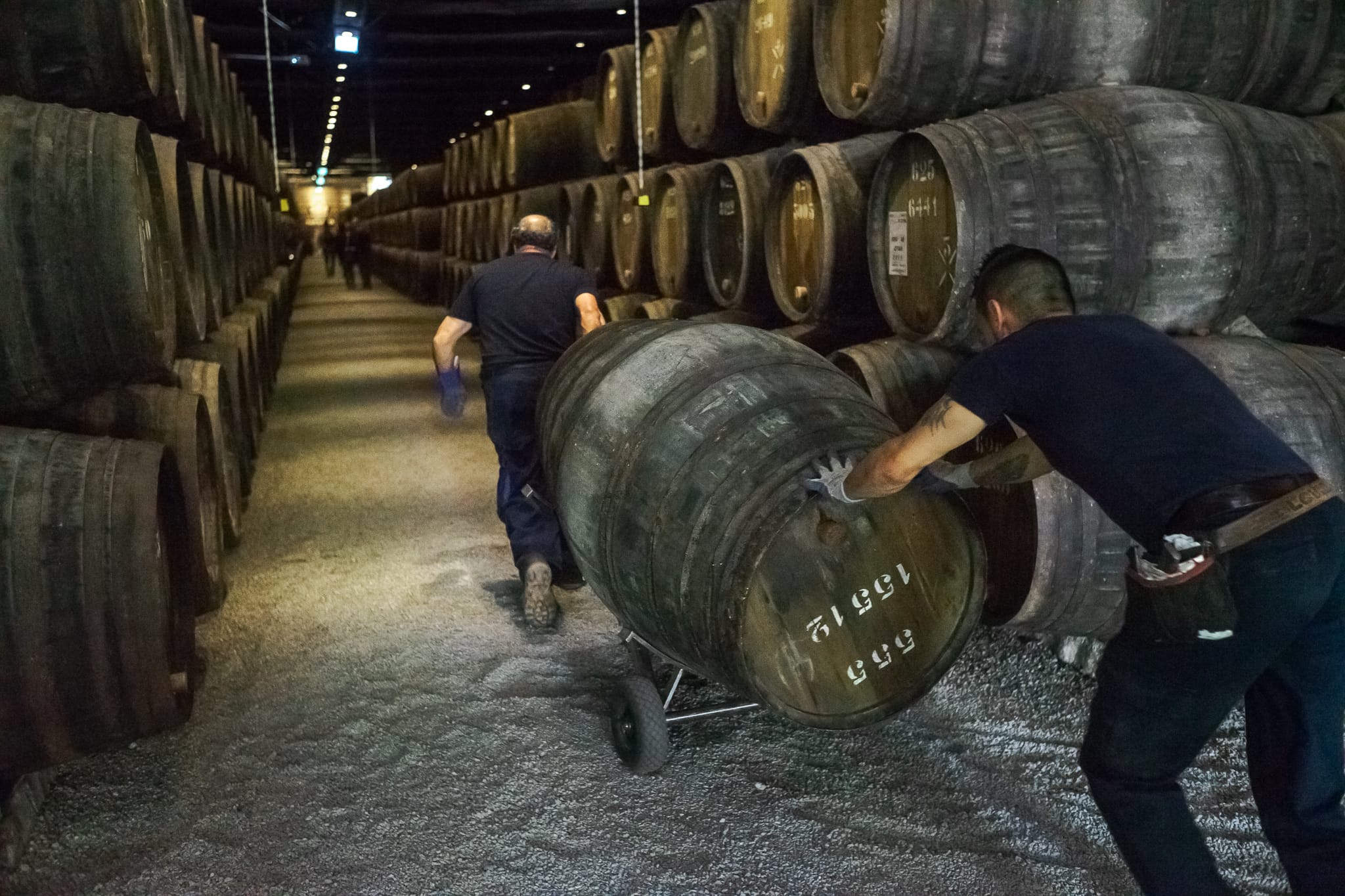Porto
Daily life of Porto city
May 2017
Spirit of medieval times and modernity mixed with Port wine and Harry Potter fairytales. This is the city of Porto, where you can find the freshest seafood, take a ride on the Atlantic ocean wave on a surfing board and meet the most open and friendly people. What more can you find here?
Porto is the second-largest city of Portugal but the first largest in its history. The first mention of the Porto belongs to 300 years before AD; the Romans called him Portus Cale from what the name of the whole country came to be.

Tourists in tuk-tuk in front of Igreja do Carmo church
Porto nowadays is a city in which Middle Ages are combined with modernity. At first glance, this is visible only in architecture, but if you take a closer look, it can be seen in the whole life of the city. Old Porto is primarily the medieval area of Se with narrow streets where you can get lost if you can not know one simple rule - always go down and come to the river. Here the laundry dry on ropes between the houses, in the morning, the streets are washed with water and soap, and if you talk with the locals, they can invite you to their home. The facades of many houses are decorated with ceramic tiles. This is Azulejos - hand made painting on ceramic tiles - an old and almost disappeared craft, which is now reborn again in small workshops. Porto central station walls are covered with Azulejos - pictures that tell the history of Portugal.

Workers of Portwine storage pull a cask with wine.
Old Porto is also Portwine. Although it is made in the Valley of the Duoro River and its production technology changed a lot, it is still transported to Porto. More precisely to Guya - the city located on the opposite side from the old Porto. All wine warehouses like on a huge shop window are clearly visible from the Louis I bridge. The selection is rich both in terms of English names and in terms of varieties of wine.

Wine tasting in one of Porto winery.

A man fishes on the coast of the Atlantic ocean.

A permanent resident of the Bolhão market asks for fresh fish.
Old Porto is, of course, its markets. In the city, located on the Atlantic Ocean coast, it is impossible to pass fish markets. This is the same attractive place for the tourist as churches and fortresses. On such a market, everything is colourful, from seafood to cats and seagulls who graze there in the hope of getting them breakfast, lunch and dinner. Only here you can find the fresh fish on any day except Monday. Here, with several deft movements, the fish will be cleaned, cut and packaged. In addition to fish on the market, you can buy a live bird: pigeon, turkey or rooster. And if the fate of the latter two is clear, the future of the pigeon is not so obvious.

Old fishermen fix nets in Afurada village.

Graffiti on walls of old city Se.

A woman walks out her dogs under Luis I bridge.
Women still do hand laundry in Porto. In village Afurada, there is a laundry house where women come with pelvises on their heads to make laundry old style. Washed clothes then will dry on the pier on stretched ropes. Water to the laundry is taken from underground mineral springs, the same used to supply drinking water.

Women still do hand laundry in village Afurada.

Washed clothes then will dry on the pier on stretched ropes.

Students prepare props for the play in the theatre school Bolhão.

People take memory pictures in the famous book shop Livraria Lello.

A wedding party waits at the entrance to Igreja dos Clérigos church.
There are a lot of older people, those above 70, in old Porto. According to statistics, their number is only slightly lower than 30-year-old and 40-year-old. These are not fluttering old men and old women. Many continue to keep their little business despite their age: shops, barbershops, tailor or shoemaker workshops. People here work literally until their last day. And not only work - in good weather every evening in the park are going to elderly men to shut into cards.

Porto central station walls are covered with Azulejos - pictures that tell the history of Portugal.

Dome of Igreja dos Clérigos church.

Church Santo Ildefonso.

A man is reading a morning newspaper in the old city of Porto.

In addition to fish on the market, you can buy a live bird: pigeon, turkey or rooster.

A local man invites a tourist to feed pigeons.
New Porto is a university with students who occupy the city for a week every year. In early May, a student celebration is traditionally arranged in honour of the school graduation. This celebration came from the University of Coimbra and is called "burning ribbons." During the week, students dressed as Harry Potter walk around the city in large groups holding leather folders with hanging out multicoloured tapes. Friends and relatives write wishes on the ribbons. The colour of the stripes corresponds to the colour of the faculty where the student has studied. The number of ribbons - the number of years spent at the university. The holiday ends with a student procession on the central street of the city.

Students prepare a truck for the procession on "burning ribbons" celebration day.

A woman in a traditional apron walks in the old city of Porto.

A tourist enjoys a view from Luis I bridge.
In modern Porto, there is a sea of tourists. Their number is growing annually by 10%. Several years in a row, Porto is called the best tourist destination in Europe. This is a blessing and a curse for the city at the same time. Locals are afraid that it gradually will turn into Barcelona, where taxes on hotels are introduced to reduce tourists inflow. Tourists not only bring income for the city but at the same time make food and property prices rise.

Tram number 1, which goes on the embankment of Douro River from Porto to the ocean coast, passes by visitors of a restaurant.

Pedestrians caught in a thunderstorm on Luis I Bridge.
In the new Porto, the walls of houses are decorated not only with traditional ceramic tiles but also with modern graffiti. The city has officially allowed painting the walls for a community of graffiti artists, which also control the quality of the art. After introducing these rules, Porto became one of the leading cities in modern urban art in Europe.

Parents of students who graduated hit with a stick on a hat on "burning ribbons" celebration day.

Porto is divided into two cities by Douro River: Gaya and Oporto.

A tourist boat passes under Luis I Bridge.



